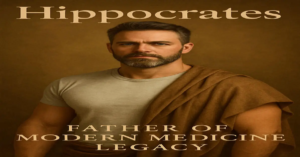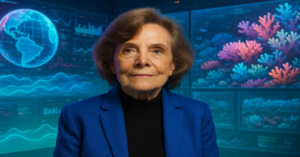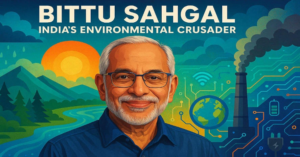Beyond the Lamp: How Florence Nightingale Rewired Medicine and Power
Florence Nightingale: The Steel Beneath the Lamp’s Gentle Glow

You know her silhouette—the graceful figure bending over wounded soldiers, lamp in hand. But the real Florence Nightingale was no porcelain angel. She was a thunderstorm in petticoats,a data-obsessed revolutionary who shattered Victorian expectations and invented modern nursing through sheer, unyielding will. Let’s strip away the saintly myth to meet the woman who traded privilege for pus-stained bandages and turned compassion into
systemic change.
Prologue: The Crushed Corsage (1820-1844)
Florence at 7:
A wild-haired girl kneels in the mud at Embley Park, England. Her hands press a sparrow’s broken wing.
Servants scold: “A lady doesn’t soil her dress!” Her mother sighs: “Why can’t you be proper like your sister
Parthenope?”
The Cage:
- Gilded Prison: Silk gowns, Italian tours, suitors like poet Richard Monckton Milnes
- Secret Hunger: Hoarding government health reports under her mattress
- The Vision (1837): “God called me in a dream. Not to marry. To serve.”
Family Fury:
“Would you disgrace us? Nursing is for drunkards and whores!” — Aunt Mai
She collapses. Diagnosed with “hysteria.” Doctors prescribe:
- Leeches to the groin
- Opium-laced “calming syrups”
- Forced water immersion
Her rebellion? Secretly learning hospital sanitation notes in German.
Breaking Free: Scandal in Kaiserwerth (1845-1853)
The Escape:
At 25, Florence fakes a “rest cure” in Germany. In reality, she enters Kaiserwerth Deaconess Institute—a hospital run by Protestant nuns.
Shock:
- Filth: Pus-soaked rags reused on patients
- Pain: Amputations without anesthesia
- Humanity: A dying prostitute clutching her hand: “You see me. No one sees me.”
Transformation:
| Victorian “Lady” | Florence at Kaiserwerth |
|---|---|
| Gloves at dinner | Elbow-deep in gangrene |
| Parlor small talk | Demanding autopsy reports |
| Piano practice | Sketching sewer systems |
She returns home—rejected.
“You smell of death,” her mother weeps. “No man will ever want you now.”
Crimea: Hell’s Classroom (1854-1856)

The Scutari Horror:
Turkey, November 1854. Florence arrives with 38 nurses. The British Army hospital is a converted cesspit:
- Sewage seeping under cots
- Fleas swarming on rotting wounds
- Men drinking cholera-tainted water because the tea ration ran out
The “Angel” Myth vs. Reality:
- The Lamp: A 4-pound Turkish fanoos (brass lantern) she hauled through freezing corridors.Not a dainty vase—a 4-pound Turkish fanoos (brass lantern).
- The Night Rounds: Not gentle comfort—emergency triage by lamplight: “This one lives—clean his maggots. That one dies—give him morphine.”
- The Enemy: Not just war wounds— typhus, cholera, and bureaucratic sadism
Her War Tactics:
- Scrub Brigade: Forced surgeons to wash hands in chloride of lime
- Data Bomb: Recorded how 16,000 of 18,000 deaths were from disease, not bullets
- Psychological Warfare: Wrote to The Times exposing generals: “These men are murdered by red tape.”
A Soldier’s Truth:
“When all others fled the stench, Miss Nightingale knelt. She held my hand as the fever burned. Not an angel. A general.” — Pvt. Thomas Murphy, 4th Dragoons
The Real “Lady with the Lamp”: Steel & Science
Beyond the Icon:
That famous portrait? A Victorian fantasy. Real Florence at 34:
- Hair cropped short (typhus-infested lice)
- Face gaunt from near-starvation (she fed patients first)
- Dress stained with blood, iodine, and political fury
Her Forbidden Innovations:
- Patient Diaries: Noting how morale affected recovery
- Statistical Rose Diagrams: Color-coded death charts to shame Parliament
- “Nightingale Wards”: Airy, sunlit rooms with 30-foot windows (still used today)
The Cost:
Collapsed in Crimea (1855). Diagnosed with “Crimean Fever” (likely brucellosis). Chronic pain imprisoned her for 54 years.
Bedridden General: The Invisible War (1857-1910)
The London Attic:
Confined to her bed at Park Street, she became:
- A Data Assassin: Writing 200+ pamphlets exposing sanitation crimes
- A Master Manipulator: Training protégés like Dr. Sutherland to lobby Parliament
- An Unseen Architect: Designing hospitals from India to America via letters
Tactics from the Mattress:
- Poison Pens: “Your laziness kills more than Russian cannon.” — Letter to War Secretary Sidney Herbert
- Economic Blackmail: Proved cleaner hospitals saved taxes (“Every corpse costs £36!“)
- Feminist Subversion: Funded scholarships for poor nurses —never putting her name on them
Her Contradictions:
- Championed statistics but dismissed germ theory (“Pasteur’s ‘little beasts’ are fantasy!”)
- Demanded nurses’ education but called women “incapable of abstract thought”
- Saved soldiers but opposed anesthesia in childbirth (“Pain is God’s design”)
“I stand at the altar of murdered men,” she wrote, “and while I live, I fight.”
Kitchen Table Revolution: How Florence Nightingale Changed Your Life
In Your Hospital:
- Call Buttons: Invented after a paralyzed soldier starved unheard
- Nutrition Charts: Her standardized diets (replaced rum rations with vegetable broth)
- Fire Escapes: Mandated after Scutari’s flammable corpse chutes
In Your Home:
- Window Screens: Her mosquito netting advocacy reduced malaria
- Soups as Medicine: Her “Recovery Broth” recipe (bone marrow + barley + thyme)
- Infographic Culture: Her pie charts birthed modern data visualization
Global Ripples:
- Japan: 10,000 copies of Notes on Nursing distributed after 1923 earthquake
- India: Trained midwives reduced maternal deaths by 40%(1870)
- Gaza (2024): Refugee camp nurses still using her wound-cleaning protocols
Florence Nightingale in the Mirror: The Human Cracked
Private Torments:
- Unrequited Love: Turned down politician Richard Milnes to remain “wedded to death”
- Guilt: Haunted by soldiers she couldn’t save (“I hear their cries in the wind”)
- Isolation: Banned from her sister’s funeral for “causing Mother’s stroke”
Her Last Rebellion (Age 90):
Blind, bedridden, she secretly funded a lesbian couple’s nursing school—defying Victorian morality.
“Never let tradition cage compassion.”she whispered before death.
Why Florence Nightingale Burns Brighter Today
In Modern Crises:
- COVID-19 ICUs: Nurses recording symptom patterns—her data legacy
- Refugee Camps: Prioritizing clean water over bandages—her Scutari lesson
- Nursing Strikes: Demanding safe staffing—her battle against “economical murder”
A Challenge to You:
- Be the Lamp: Next time you see suffering,Ask: “What system failed you?”
- Wield Data: Track a local issues with —garbage pileups, ER waits—with her rose diagrams
- Honor Her Complexity: Great Reformers aren’t saints—they’re stubborn, flawed, relentless
“I attribute my success to this: I never gave or took an excuse.”
Florence Nightingale: The Real Monument
Forget marble statues. Florence’s true memorials:
- The nurse skipping lunch to hold a dying patient’s hand
- The community health worker mapping cholera outbreaks in Lagos slums
- Your hands washing a child’s scraped knee—thoroughly, with soap
Florence Nightingale Truth:
The lamp wasn’t about light—it was about witness. In its glow, she forced the world to see:
Human dignity isn’t earned. It’s every person’s birthright—and every society’s duty to protect.











